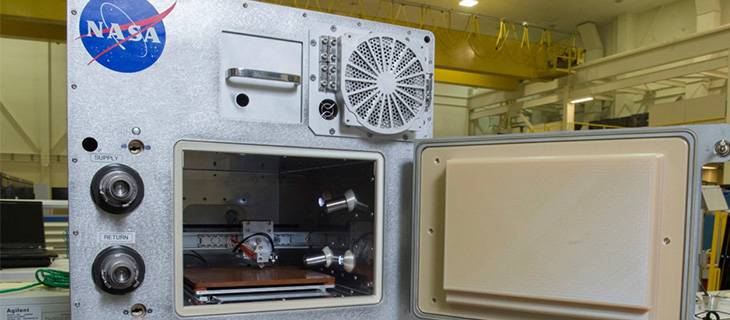Plastic Recycling Soon to be Possible in Space
A major evolvement has been witnessed in the recycling of plastic throughout the years. The recycling of HDPE and PET containers has displayed the development of recycling. And now, NASA plans to introduce plastic recycling in space. This will offer an extra step of sufficiency to the onboard astronauts combined with 3D printing technology.
The present situation demands NASA to send cargo rockets to space in every few months costing them a lot of money. The cargo for foodstuffs is of course, unavoidable. However, the equipment costs can be curbed down if NASA only sends the basic 3D printing material.
The invention
NASA is introducing ‘Refabricator’, a device which will take in the plastic waste of any shape and size and transform them to a feedstock which will be used for 3D print articles. As stated by NASA, it is a single automatic machine which looks somewhat like a regular sized refrigerator. The method of 3D plastic printing is by ejecting molten plastic through a printer. This plastic is then headed to build an object in a horizontal layer. This machine fulfills the challenge to work in zero-gravity.
How does it help?
This will help astronauts to recycle or manufacture utensils that can be used for their meals. The waste can be turned in to feedstock that will help them build future space systems. Basically, the process turns the waste into filaments that are used in the Refabricator which will print them into replacements parts, new satellite components or tools that can be used by the astronauts for their research.
What does it offer?
This technology will not only save NASA from the high expenses but also reduce the risks for private space missions. The Refabricator is the first integrated recycler and manufacturer of its kind. According to NASA, the Refabricatortakes into consideration the challenges associated with the operations on the ISS and future missions in space. This includes mass and volume constraints, microgravity, limitation on direct human interaction and safety requirements.
Leave a Reply Cancel reply
Recent Posts
- Understanding The Materials That Are Used To Build Plastic Toys
- All You Need To Know About Food-grade Plastics
- A Glance At The Materials That Boost The Performance Of Plastics
- Understanding The Importance Of Exploring New Business Opportunities In The Plastic Industry
- Understanding The Importance Of Investing in R&D For The Plastic Industry
Categories
- 3D Printing
- AIPMA
- Automation
- Automobile Sector
- Bio Plastics
- Environment
- Innovations In Recycling
- Latest Innovations
- Molds & Dies
- News
- Packaging Industry
- Plastic
- Plastic Application
- Plastic Industry
- Plastic Market
- Plastic Myths
- Plastic News From The World
- Plastic Packaging
- Plastic Products
- Plastic Recycling
- Plastic Solar Cells
- Plastic Toys
- Plastic Waste
- Plastic World
- Plastics
- Plastics And Their Applications
- Plastics In Agriculture
- Plastics In Healthcare
- Plastics In Medical Industry
- Plasticulture
- Processing Machinery
- Recycling Machines
- Robotics
- Uncategorized
- Virtual Reality
Archives
- November 2023 (3)
- October 2023 (2)
- September 2023 (3)
- August 2023 (3)
- July 2023 (3)
- June 2023 (3)
- May 2023 (2)
- April 2023 (2)
- March 2023 (2)
- February 2023 (2)
- January 2023 (2)
- December 2022 (3)
- November 2022 (1)
- October 2022 (1)
- September 2022 (2)
- August 2022 (1)
- July 2022 (3)
- May 2022 (3)
- March 2022 (2)
- February 2022 (1)
- January 2022 (1)
- September 2021 (2)
- August 2021 (3)
- July 2021 (4)
- June 2021 (4)
- May 2021 (3)
- April 2021 (2)
- March 2021 (4)
- November 2019 (8)
- October 2019 (8)
- September 2019 (8)
- August 2019 (8)
- July 2019 (8)
- June 2019 (8)
- May 2019 (8)
- April 2019 (8)
- March 2019 (8)
- February 2019 (11)
- January 2019 (8)
- December 2018 (8)
- November 2018 (12)
- October 2018 (12)

